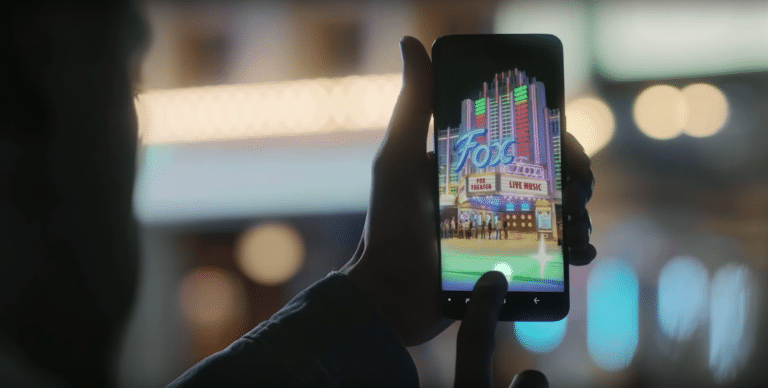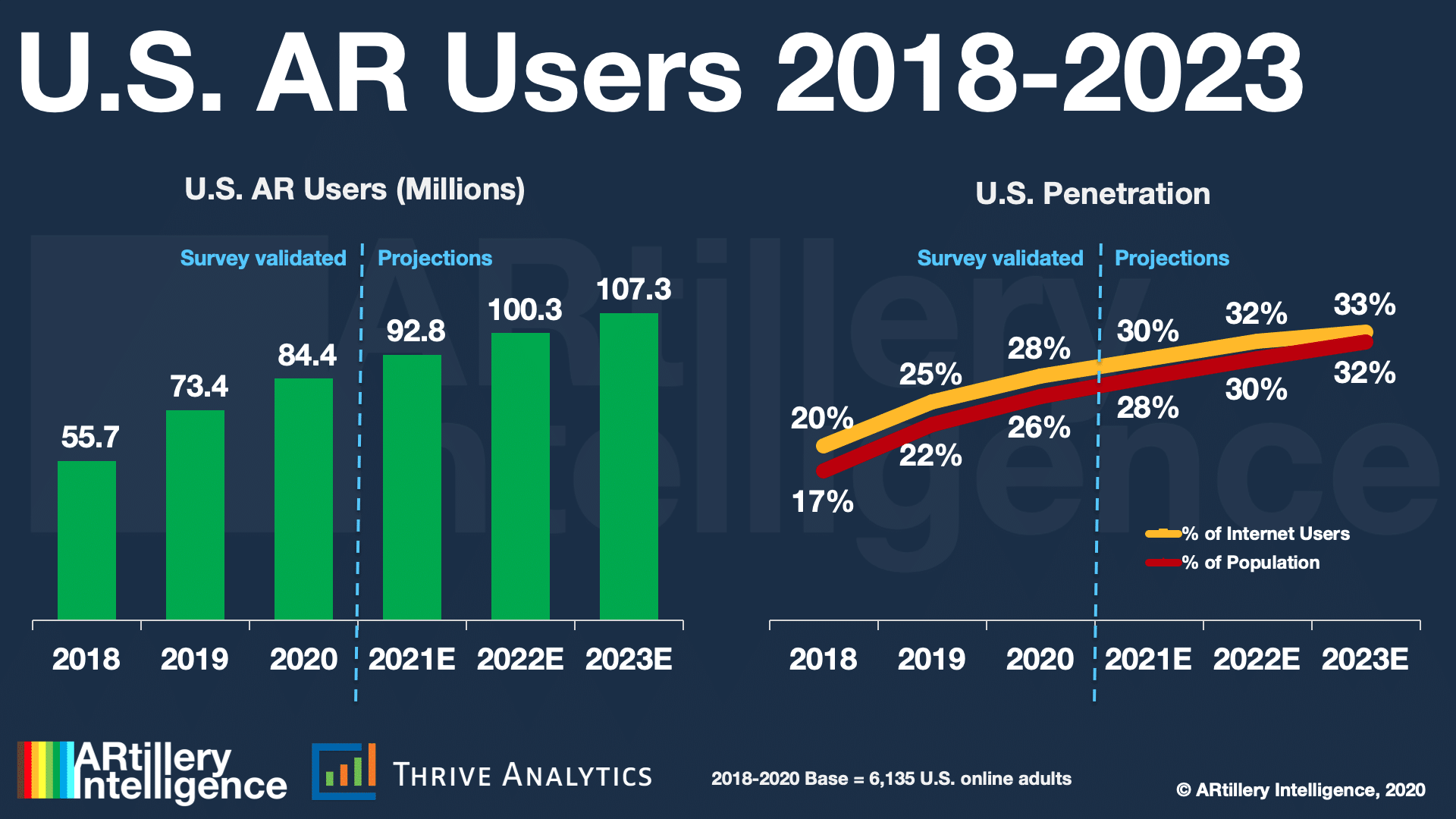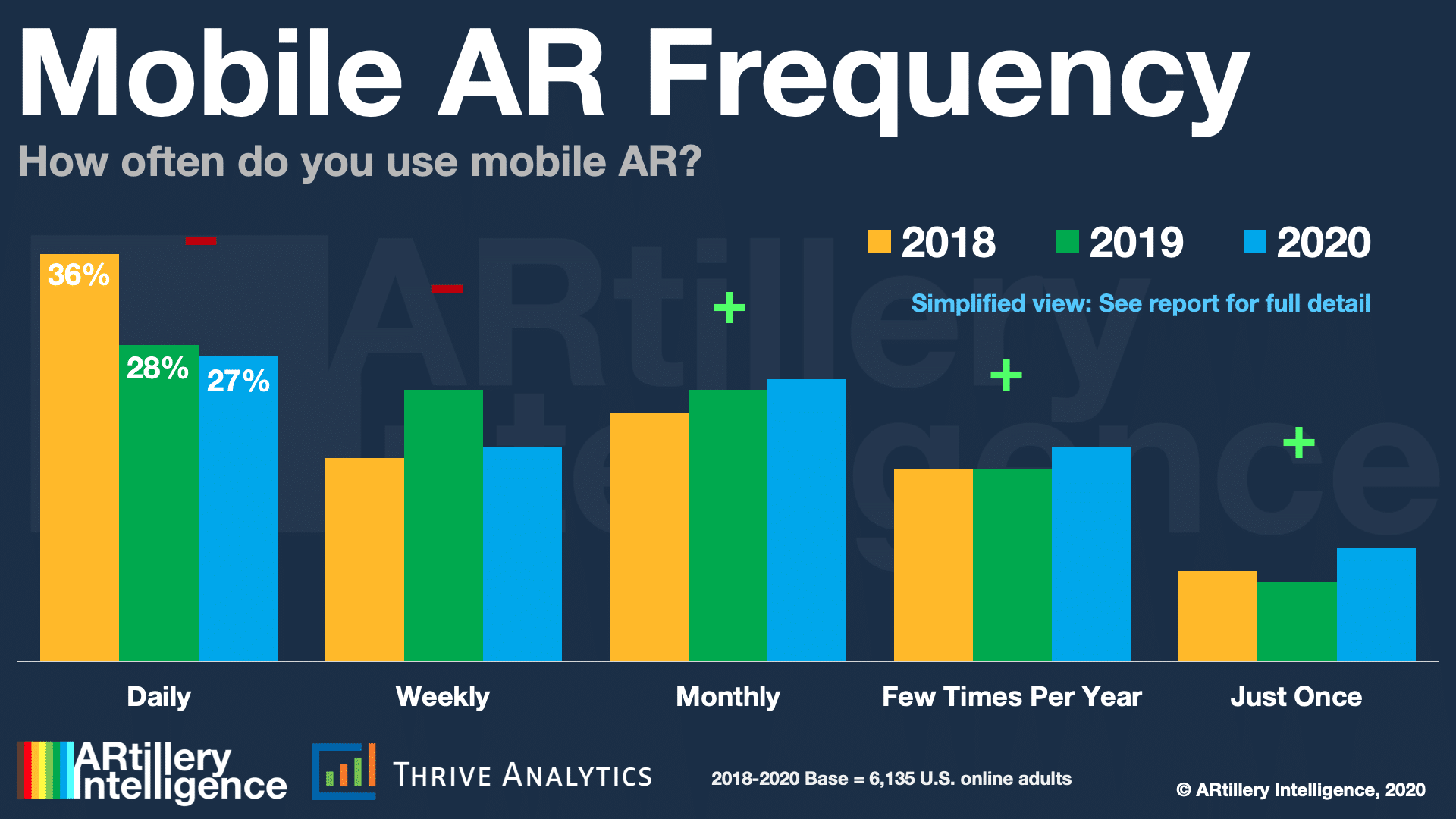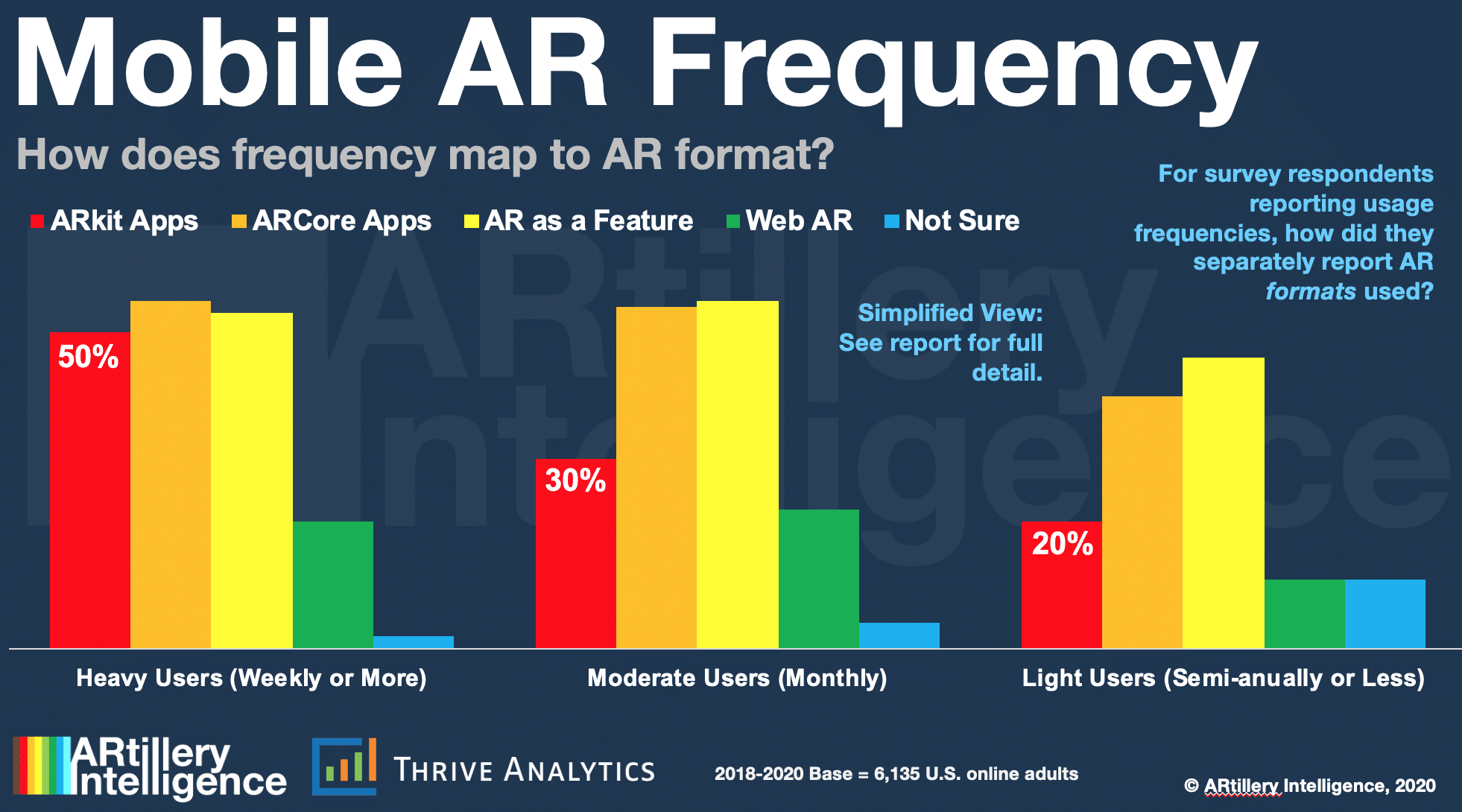
![]() “Behind the Numbers” features original data and strategic takeaways from our research arm, ARtillery Intelligence. For the full library of indexed business intelligence, subscribe to ARtillery PRO.
“Behind the Numbers” features original data and strategic takeaways from our research arm, ARtillery Intelligence. For the full library of indexed business intelligence, subscribe to ARtillery PRO.
Industry rhetoric about AR’s world-changing status outweighs tangible evidence that it’s captivating consumers today. Though we see some evidence, such as lens engagement figures from Snapchat and others, we’re mostly flying blind when it comes to consumer AR sentiment.
Looking to fill that gap, AR Insider’s research arm ARtillery Intelligence has completed Wave III of its annual consumer survey report. Working with consumer survey specialist Thrive Analytics, it wrote questions to be fielded to 1000 U.S. adults and produced a report based on the results.
Known as AR Usage & Consumer Attitudes, Wave III, it follows similar reports over the last few years. Three waves of research now bring new insights and trend data to light. And all three waves represent a collective base of 6,135 U.S. adults for robust longitudinal analysis.
Among the topics: How is mobile AR resonating with everyday consumers? How often are they using it? How satisfied are they? What types of experiences do they like most? How much are they willing to pay for it? And for those who aren’t interested in mobile AR… why not?

Frequency: Beyond Vanity Metrics
Picking up where we left off in examining consumer AR sentiments, a key variable for mobile AR success is how often it’s used. Due to arm fatigue and other factors, shorter sessions should be counterbalanced by high-frequency. The name of the game is to instill active use or “replayability.”
Mobile AR experiences that fuse the novelty of augmentation with frequent or repeatable activities show the most monetization potential. These “sticky” behaviors include social messaging, gaming, and utilities like visual search. These are things that happen daily or more.
Drilling into the data, 71 percent of mobile AR users are active at least monthly, 46 percent at least weekly, and 27 daily. These are high figures by mobile app standards, and indicate that the active-use challenges endemic to mobile apps aren’t as prevalent in AR’s microcosm.
That’s the good news… The bad news is that daily and weekly use are down from 2018 and 2019. This could be due to disappointment that’s set in after the circa-2017 AR hype cycle. Though AR interest in the wake of that period has waned, it should bounce back as AR experiences evolve.

Deeper Dive: Frequency + Format
Staying with the topic of frequency, we can gain additional dimension by combining the variables examined so far in this report. In other words, what AR formats are driving the most repeat usage? And how does reported AR frequency map to AR categories like gaming and social?
To do this, we cross-referenced survey segments. For survey respondents reporting usage frequencies, how did they separately report the AR content formats they’ve used? Just like in the overall format breakdown examined recently, ARCore apps and “AR-as-a-feature” lead.
But going deeper into AR formats at different frequency levels reveals new insights. For example, AR-as-a-feature is popular among the most frequent users. This stands to reason as this format is used by AR experiences that we otherwise know to be most active, such as Snapchat Lenses.

Also including Pokemon Go, AR-as-a-Feature is characterized as AR features in non-AR apps. Their ease of use and accessibility – nestled within already-popular apps – can be attributed to this high frequency. Put another way, they make the AR experience easy to get to.
This is a key takeaway for AR developers or strategists. To drive frequent use, it continues to be validated that planting AR in users’ existing paths is more effective than making them download separate AR apps. This “training wheels” approach continues to pop up in our research.
We’ll be back with more report excerpts and tidbits. Meanwhile, check out the full report here.
